Narbeck Wetland Sanctuary Park
Basic Facts About Wetlands
Wetlands are areas where water covers the soil, or is present either at or near the surface of the soil all year or for varying periods of time during the year. Some wetlands are actually dry at certain times of the year. There are various types of salt and freshwater wetlands. With this earthcache will briefly discuss the different types of wetlands for the purposes of identification and then go into questions that pertain to the Narbeck Wetland Sanctuary Park.
Types of Wetlands
Marshes
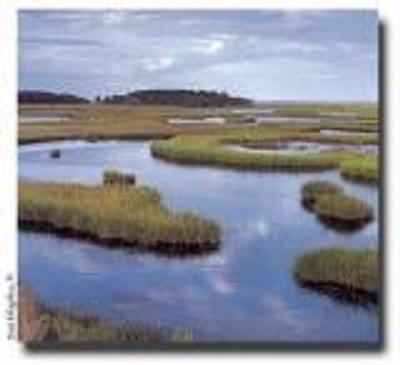
Marshes are defined as wetlands frequently or continually inundated with water, characterized by emergent soft-stemmed vegetation adapted to saturated soil conditions. There are many different kinds of marshes, ranging from the prairie potholes to the Everglades, coastal to inland, freshwater to saltwater. All types receive most of their water from surface water, and many marshes are also fed by groundwater. We have divided marshes into two primary categories: non-tidal and tidal. Since Narbeck is obviously not on or very near a large salt water body, we will focus more on the non tidal marshes.
There are several different types of non tidal marshes like prairie potholes, vernal pools and playa lakes. Since these types of non tidal marshes are not typically found in Western Washington, we will just focus on the types of non tidal marshes can be found in our region:
Wet Meadows

A wet meadow starts out as a lake that over time with the build up of sediment, the lake shrinks and eventually becomes a wet meadow as the diagram above depicts.
Types of Swamps

Olympic Rainforest Swamp
A swamp is a wetland that is forested. Many swamps occur along large rivers where they are critically dependent upon natural water level fluctuations. Some swamps have hammocks, or dry-land protrusions, covered by aquatic vegetation, or vegetation that tolerates periodic inundation. There are several different types of swamps but for the purpose of the earthcache, we will discuss the type found in our region.
Forested Swamps

Freshwater swamp forests, or flooded forests, are forests which are inundated with freshwater, either permanently or seasonally. They normally occur along the lower reaches of rivers and around freshwater lakes.
Shrub Swamps

Are a type of freshwater wetland that occurs in areas too wet to become swamps (“true” or freshwater swamp forest), but too dry or too shallow to become marshes. They are often considered transitional (“mid-successional”) between wet meadows or fens and conifer or hardwood swamps.
Bogs
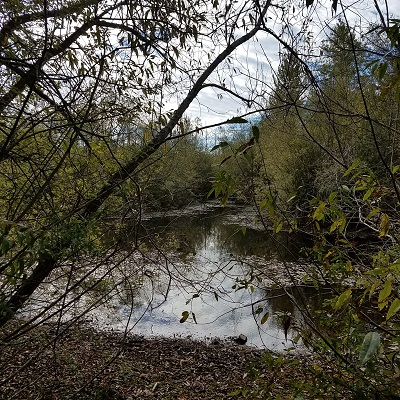
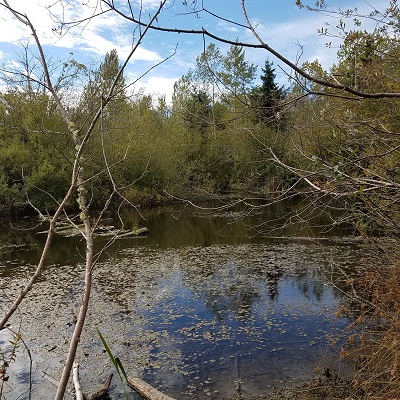
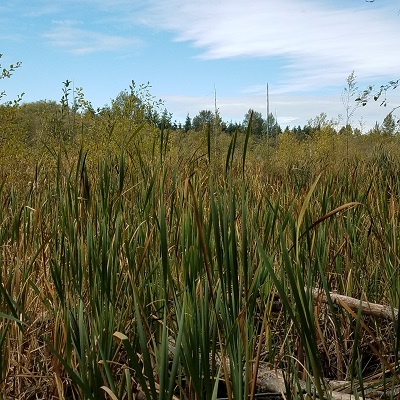

A bog is a wetland that accumulates peat, a deposit of dead plant material—often mosses, and in a majority of cases, sphagnum moss. Bogs occur where the water at the ground surface is acidic and low in nutrients. In some cases, the water is derived entirely from precipitation, in which case they are termed ombrotrophic (rain-fed). Water flowing out of bogs has a characteristic brown color, which comes from dissolved peat tannins. In general, the low fertility and cool climate results in relatively slow plant growth, but decay is even slower owing to the saturated soil. Hence peat accumulates
Fens
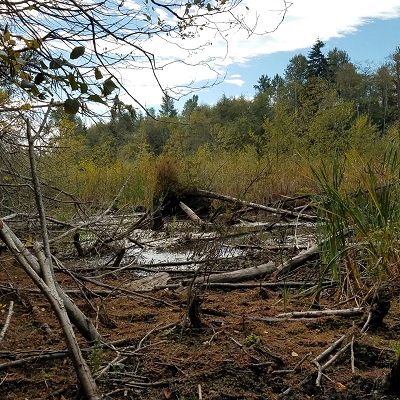

Fens, are peat-forming wetlands that receive nutrients from sources other than precipitation: usually from upslope sources through drainage from surrounding mineral soils and from groundwater movement. Fens differ from bogs because they are less acidic and have higher nutrient levels. Therefore, they are able to support a much more diverse plant and animal community. These systems are often covered by grasses, sedges, rushes and wildflowers. Some fens are characterized by parallel ridges of vegetation separated by less productive hollows. The ridges of these patterned fens form perpendicular to the downslope direction of water movement. Over time, peat may build up and separate the fen from its groundwater supply. When this happens, the fen receives fewer nutrients and may become a bog.
Like bogs, fens are mostly a northern hemisphere phenomenon -- occurring in the northeastern United States, the Great Lakes region, the Rocky Mountains and much of Canada -- and are generally associated with low temperatures and short growing seasons, where ample precipitation and high humidity cause excessive moisture to accumulate.
Now that discussed the different types of wetlands in our area, let get to the questions related to the Narbeck Wetland Sanctuary
To Get Credit for this Earthcache please send a message or email to me your answers to the following questions based upon your observations of the wetlands – do not post in your log or it will be deleted:
Given the descriptions of various types of wetlands in our region noted above, what type of wetland do you think Narbeck is?
Provide at least two observations of the Narbeck Wetland that support your answer to the previous question.
Besides being a wetland sanctuary, what other possible functions does this wetland serve?
If you see a beaver post a picture, but pictures are not required, just enjoy the beauty of this place.
CONGRATS TO mc3cats FOR A SPEEDY FIND AND A WALK IN THE PARK!!